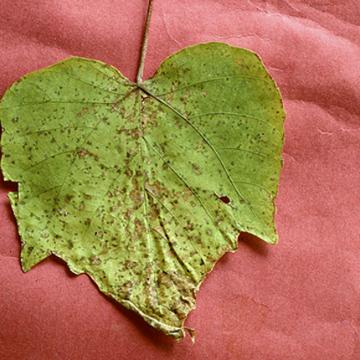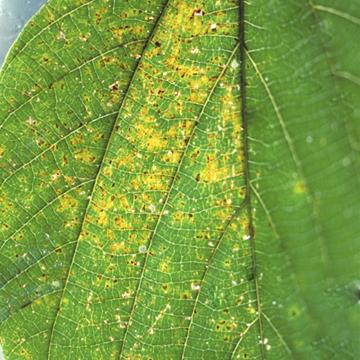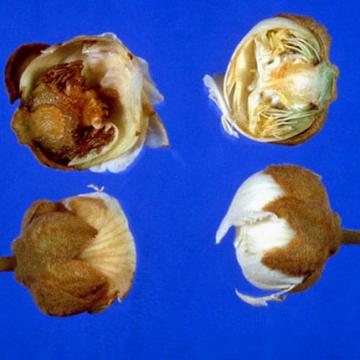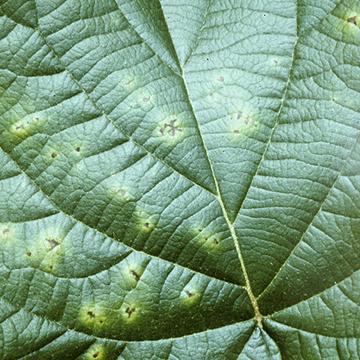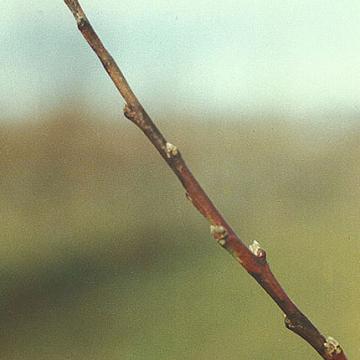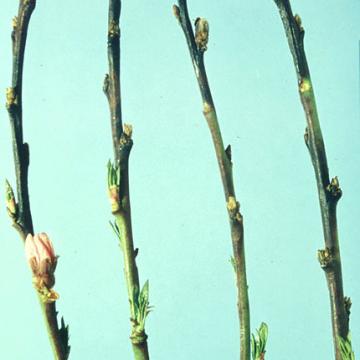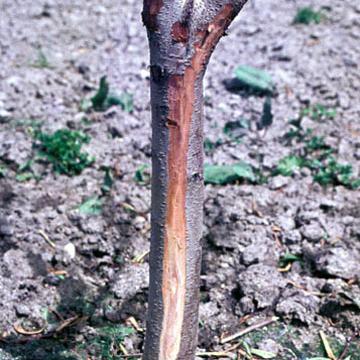DISEASE: Bacterial brown spot
HOST: Mallotus
Leaf with small, rustylike lesions.
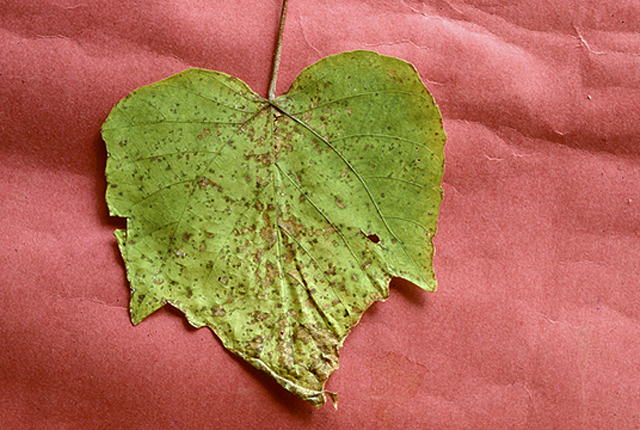
Bacterial brown spot | Mallotus
DISEASE: Bacterial brown spot
HOST: Mallotus (Mallotus japonicus)
PATHOGEN: Xanthomonas campestris pv. malloti
SOURCE: M. Goto
DISEASE: Bacterial brown spot
HOST: Mallotus
Leaf with tiny, light brown spots surrounded by chlorotic zones.
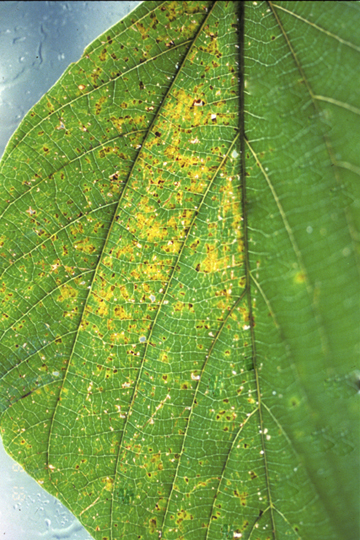
Bacterial brown spot | Mallotus
DISEASE: Bacterial brown spot
HOST: Mallotus (Mallotus japonicus)
PATHOGEN: Xanthomonas campestris pv. malloti
SOURCE: M. Kobayashi, M. Goto
DISEASE: Bacterial canker (Leaf and fruit spot)
HOST: Kiwi
Diseased blossoms, a stage of bacterial canker.
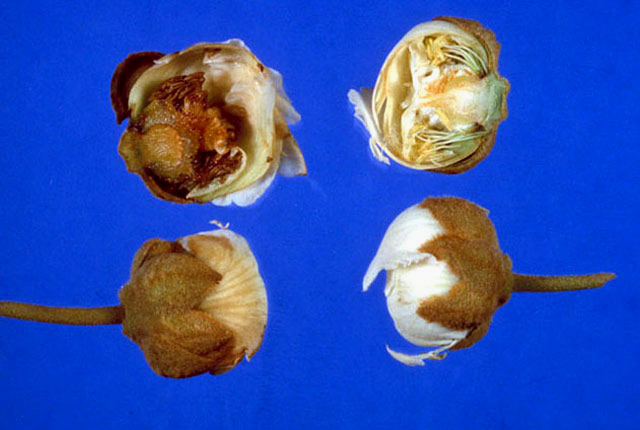
Bacterial canker (Leaf and fruit spot) | Kiwi
DISEASE: Bacterial canker (Leaf and fruit spot)
HOST: Kiwi (Actinidia chinensis)
PATHOGEN: Pseudomonas syringae pv. actinidiae
SOURCE: J. Young
DISEASE: Bacterial canker (Leaf and fruit spot)
HOST: Kiwi
Leaf spot stage of the disease with small, brown lesions with yellow halos.
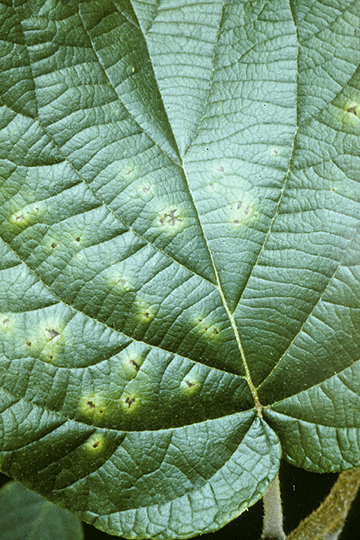
Bacterial canker (Leaf and fruit spot) | Kiwi
DISEASE: Bacterial canker (Leaf and fruit spot)
HOST: Kiwi (Actinidia chinensis)
PATHOGEN: Pseudomonas syringae pv. actinidiae
SOURCE: M. Goto
DISEASE: Bacterial canker (Leaf and fruit spot)
HOST: Kiwi
Leaf spots on young leaves. Note dark brown to black lesions on lower surface (left) and similar lesions on upper surface but with yellow halos (right).
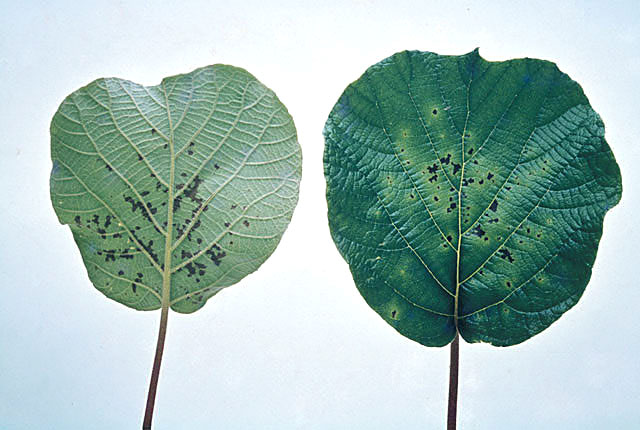
Bacterial canker (Leaf and fruit spot) | Kiwi
DISEASE: Bacterial canker (Leaf and fruit spot)
HOST: Kiwi (Actinidia chinensis)
PATHOGEN: Pseudomonas syringae pv. actinidiae
SOURCE: J. Young
DISEASE: Bacterial canker (Leaf and fruit spot)
HOST: Kiwi
Rusty-colored exudate oozing from cankers on infected trunk.

Bacterial canker (Leaf and fruit spot) | Kiwi
DISEASE: Bacterial canker (Leaf and fruit spot)
HOST: Kiwi (Actinidia chinensis)
PATHOGEN: Pseudomonas syringae pv. actinidiae
SOURCE: M. Goto
DISEASE: Bacterial dieback of nectarine
HOST: Nectarine
Dark cankers on last year's twig. Symptoms of bacterial dieback of nectarine are identical to those of bacterial dieback of peach.
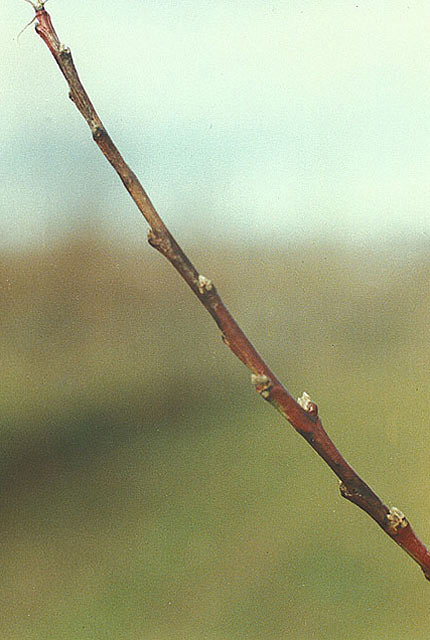
Bacterial dieback of nectarine | Nectarine
DISEASE: Bacterial dieback of nectarine
HOST: Nectarine (Prunus persica var. nucipersica)
PATHOGEN: Pseudomonas syringae pv. persicae
SOURCE: J. Young
DISEASE: Bacterial dieback of nectarine
HOST: Nectarine
Diseased young twigs.
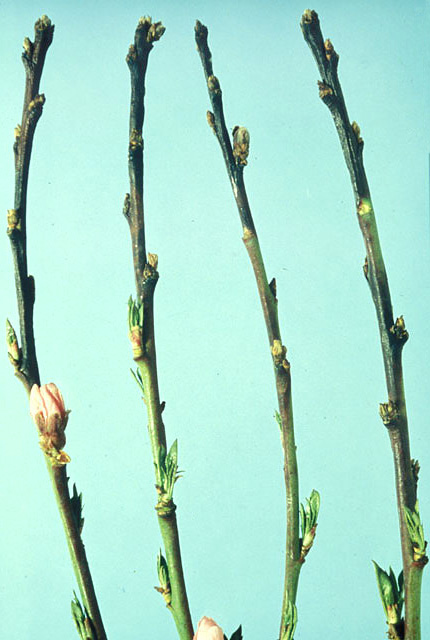
Bacterial dieback of nectarine | Nectarine
DISEASE: Bacterial dieback of nectarine
HOST: Nectarine (Prunus persica var. nucipersica)
PATHOGEN: Pseudomonas syringae pv. persicae
SOURCE: J. Young
DISEASE: Bacterial dieback of nectarine
HOST: Nectarine
Bacterial invasion of trunk caused reddish brown discolored area. Symptoms of bacterial dieback of nectarine are identical to those of bacterial dieback of peach.
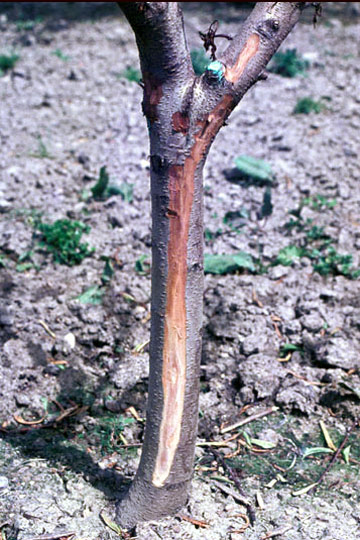
Bacterial dieback of nectarine | Nectarine
DISEASE: Bacterial dieback of nectarine
HOST: Nectarine (Prunus persica var. nucipersica)
PATHOGEN: Pseudomonas syringae pv. persicae
SOURCE: J. Young


